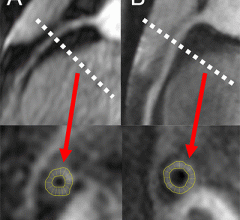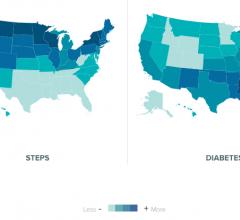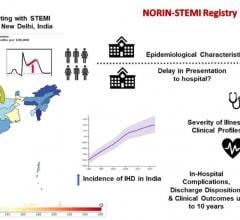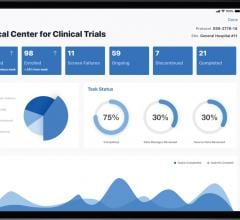Image courtesy of the American Heart Association
August 26, 2019 — Areas with a higher number of fast food restaurants have more heart attacks, according to research presented at the Cardiac Society of Australia and New Zealand (CSANZ) 2019 annual meeting, Aug. 8-11 in Adelaide, Australia. The study also found that for every additional fast food outlet, there were four additional heart attacks per 100,000 people each year.
Study author Tarunpreet Saluja of the University of Newcastle, Callaghan, Australia said: “The findings were consistent across rural and metropolitan areas of New South Wales and after adjusting for age, obesity, high blood lipids, high blood pressure, smoking status and diabetes. The results emphasize the importance of the food environment as a potential contributor towards health.”
“Ischemic heart disease, including heart attack, is one of the leading causes of death worldwide,” continued Saluja. “It is known that eating fast foods is linked with a higher likelihood of fatal and nonfatal heart attacks. Despite this, there is rapid growth in the purchase and availability of fast food. This highlights the need to explore the role of food availability in the probability of having a heart attack.”
This retrospective cohort study included 3,070 patients admitted to hospital with a heart attack in the Hunter Region between 2011 to 2013. The database contained each patient’s home postcode, allowing the researchers to analyze their surrounding fast food environment.
Fast food outlets were defined as the 10 most popular quick service food retailers in Australia, based on a population survey conducted in 2018. The researchers recorded the total number of outlets within each local government area and compared different areas to analyze the association between density of fast food restaurants and incidence of heart attack.
“Previous studies have shown that the poor nutritional value, high salt and saturated fat in fast food is connected to heart disease, yet the role of greater access to these restaurants has been less clear,” said Saluja.
“The ubiquitous presence of fast food is an important consideration for the ongoing development of rural and metropolitan areas,” he added. “The link with poor health adds a community lens to cardiovascular disease management and stresses the need to target this issue in future public health promotion strategies and legislation. This is why ESC [European Society of Cardiology] guidelines recommend the regulation of fast food outlet density in community settings.”
Prof. Tom Marwick, chair of the CSANZ 2019 Scientific Programme Committee, said: “This is an important paper that documents the association between fast foods and cardiac events, independent of risk factors. It will be crucial to explore whether this association is independent of the social determinants of disease, as we know that fast food outlets are often more common in disadvantaged areas. Nonetheless, the findings are a reminder that the fundamental drivers of cardiovascular disease burden may be altered by changes in public policy. The fact that the appropriate policy steps have not been taken, despite the cost of cardiovascular disease, remains as much a mystery in Australia as elsewhere in the world.”
Prof. Jeroen Bax, past president of the ESC and course director of the ESC program at CSANZ 2019, said: “Tackling heart disease requires individual responsibility and actions at population level. This study highlights the impact of the food environment on health. In addition to regulating the location and density of fast food outlets, local areas should ensure good access to supermarkets with healthy food.”
For more information: www.csanzasm.com


 April 04, 2024
April 04, 2024 








